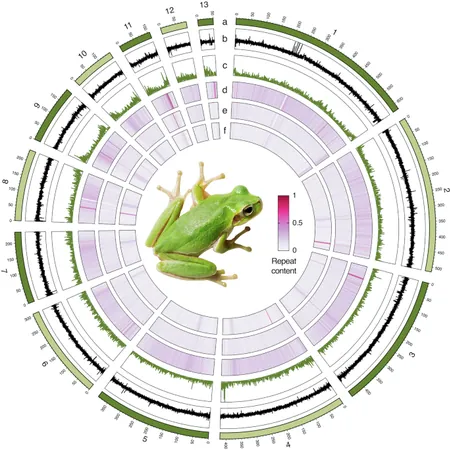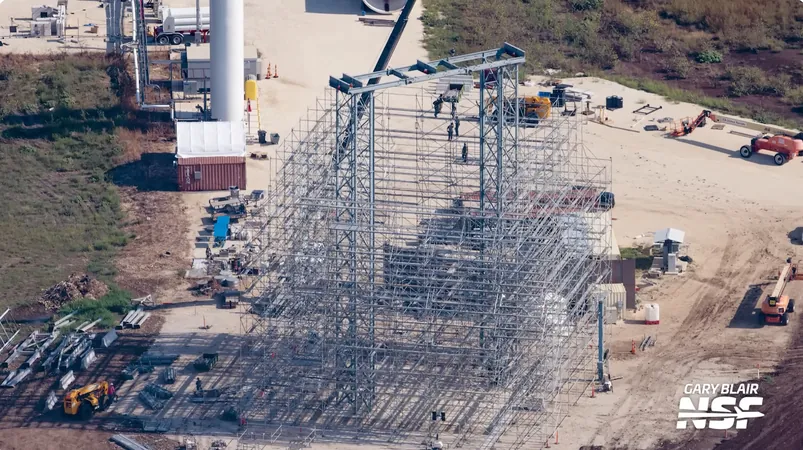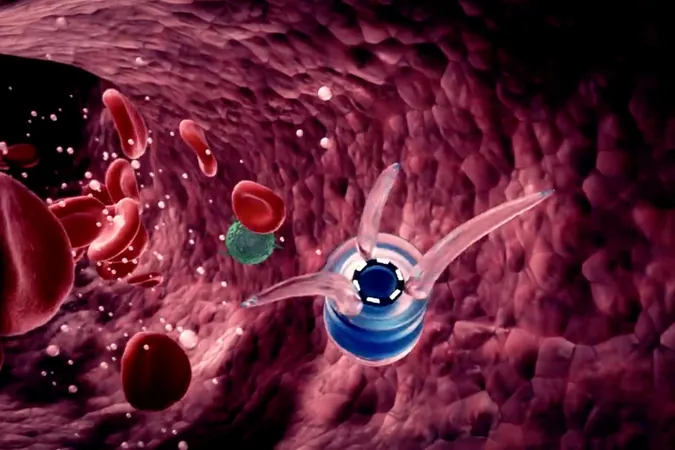
Unlocking the Mysteries of the Tyrrhenian Tree Frog: A Groundbreaking Genome Assembly
2025-09-02
Author: Jacob
Discovering the Tyrrhenian Tree Frog
Meet the Tyrrhenian tree frog, or Hyla sarda, a small but fascinating creature of the Mediterranean. Found on the picturesque islands of Sardinia, Corsica, and the Tuscan archipelago, this amphibian is not just a charming resident but also a key to understanding evolutionary biology.
An Endangered Treasure?
Typically considered common and classified as Least Concern by the IUCN, the Tyrrhenian tree frog faces serious habitat threats. Its unique adaptations and historical distribution make H. sarda a prime candidate for studying how species adapt over time.
A Journey Through Time
This frog's incredible story began during the last glacial period, when it migrated from northern Sardinia to Corsica across a temporary land-bridge. This colonization strategy included a remarkable jump to the Tuscan Archipelago, and researchers are eager to explore how such movements have shaped its genetic and phenotypic traits.
Phenotypic Evolution: A Colorful Journey
Studies reveal that frogs from the newly settled Corsican area exhibit impressive traits compared to their Sardinian cousins—larger body sizes, longer limbs, and even more cautious exploration behaviors. Interestingly, Elba Island residents show bolder behaviors yet less jumping performance. Such findings suggest complex patterns of phenotypic evolution driven by unique dispersal methods.
A Revolutionary Genome Assembly
In a pioneering effort, researchers have achieved a chromosome-level genome assembly for Hyla sarda using cutting-edge PacBio, Bionano, and Hi-C technologies. The high-quality genome, spanning 4.1 Gb and featuring 13 chromosomes, is a monumental step for exploring amphibian genomics.
Unlocking Genetic Secrets
With a remarkable 74.94% of its genome made up of repetitive sequences and nearly 23,000 predicted protein-coding genes, this genome will serve as a treasure trove for conservation studies, evolutionary history, and understanding phenotype adaptations.
The Future of Frog Research
“This groundbreaking genome assembly lays the foundation for future ecological and evolutionary studies,” says lead researcher. “By analyzing H. sarda, we’ll gain insights into the environmental pressures that shape species and contribute to conservation efforts.”
Implications for Amphibian Conservation
As climate change and habitat loss threaten biodiversity, the comprehensive understanding provided by this genomic assembly could be pivotal in devising effective conservation strategies for not just the Tyrrhenian tree frog, but amphibians worldwide.









 Brasil (PT)
Brasil (PT)
 Canada (EN)
Canada (EN)
 Chile (ES)
Chile (ES)
 Česko (CS)
Česko (CS)
 대한민국 (KO)
대한민국 (KO)
 España (ES)
España (ES)
 France (FR)
France (FR)
 Hong Kong (EN)
Hong Kong (EN)
 Italia (IT)
Italia (IT)
 日本 (JA)
日本 (JA)
 Magyarország (HU)
Magyarország (HU)
 Norge (NO)
Norge (NO)
 Polska (PL)
Polska (PL)
 Schweiz (DE)
Schweiz (DE)
 Singapore (EN)
Singapore (EN)
 Sverige (SV)
Sverige (SV)
 Suomi (FI)
Suomi (FI)
 Türkiye (TR)
Türkiye (TR)
 الإمارات العربية المتحدة (AR)
الإمارات العربية المتحدة (AR)